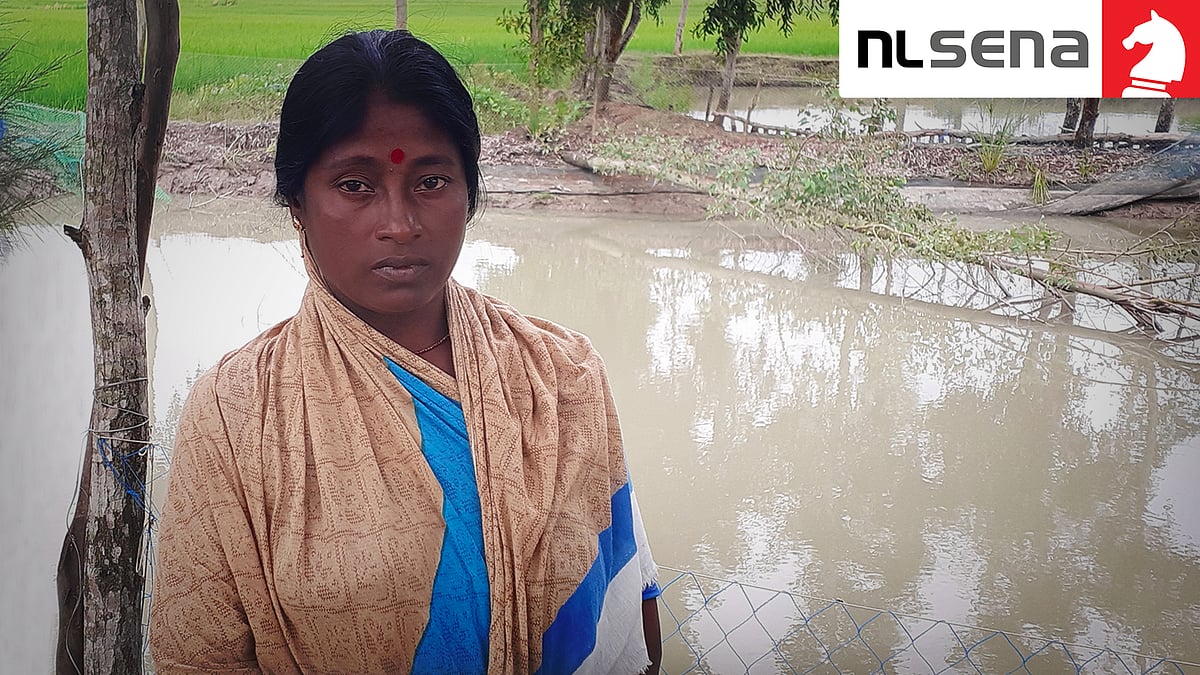How Cyclone Yaas melted down an entire island
Mousuni in Bengal’s Sundarbans was flooded by a tidal wave on May 26. The water washed away everything in its path.
Zarina Bibi and her husband wade through a 100-metre stretch of knee-deep water between a dry embankment and their destroyed hut. They rest a while at a foot-wide patch of mud at the base of a date tree, where a grey duck has made its home. Even the duck, a creature of water, seems tired of the water stretching on all sides.
In the last 72 hours, Zarina Bibi and her husband have crossed this stretch innumerable times, ever since Cyclone Yaas rendered them homeless. They live on the 26 sq km piece of land that makes up Mousuni island in Bengal’s Sundarbans, enclosed by the Ganges and the Jhinai on either side. Cyclone Yaas did not make landfall in these parts, but it still destroyed the entire island.
On May 26, hours before the cyclone hit, residents of Mousuni were anchoring and securing the roofs of their mud homes, having learnt their lesson from the destruction that Cyclone Amphan left behind last year. The rivers were swelling, they noticed, but residents had faith in the tall embankments that held the waters at bay. The concrete embankment on the Ganges’ side, for instance, rose 30 feet above the river’s surface.
But at 8.45 am that day, Cyclone Yaas’s landfall 200 km away was accompanied by a tidal wave. Water surged over the embankments in Mousuni and crashed inland. In almost no time, everyone and everything was swept away by saline water five feet deep.
No one in Mousuni had experienced anything like this before. Mothers held onto trees to stay above water, their children clinging onto them. Cattle were set free to swim to their destinies. The young escorted the old and infirm through chest-deep water to the relative safety of the first floor of the nearest mosque or high school. Marzina, around 20 years old, told me that for a few seconds, she swam alongside a big black cobra.
Astoundingly, not a single life was lost. But the loss of everything else was extensive.
About 90 percent of Mousuni’s 4,000 households live in kachcha houses: bamboo frames filled with mud and plastered with cow dung, and roofed in terracotta tiles. Many of them were rebuilt after Amphan using the Rs 1.23 lakh grant under the state government’s housing scheme, which afforded them barely four concrete walls over a foundation. With the lockdown, they couldn’t earn enough to build on it.
As a result, tidal water simply melted the mud and went unchecked through these houses, taking everything with it. Devoid of support, roofs collapsed on beds and boxes, burying everything of value. An estimated 3,000 homes in Mousuni were reduced to piles of mud and tiles, leaving nearly 12,000 islanders homeless.
Most of Mousuni’s residents are marginal farmers, dependent on their fertile land for cultivation especially since many migrant labourers have returned home and are living off rice and fish in these parts. Though Mousuni loses about 2.5 percent of its area every decade to river erosion, it still produces enough to be considered a self-sufficient economic ecosystem. For year-long consumption, every household here stores sufficient rice and rears enough fish in backyard ponds.
The tidal surge on May 26 soaked their stored rice in saline water, destroying it. The salinity also killed the fish in the 8,000-odd ponds across the island.
In Poilagheri, an area of 250 households, six out of 18 tubewells are now pumping out saline water. The island is reeling under a severe shortage of food and drinking water. Children have lost textbooks, adults their legal documents, mosques their holy scriptures.
On the morning of May 29, as I crossed the Jhinai to the island, I felt as if I had stepped into a tragedy of epic proportions. In a matter of hours, nature had stripped about 20,000 people of their dignity.
On the embankment, Hansbul Khan of Baghdanga village sat silently on his haunches, staring into space. His wife nearby spread sodden rice on the ground, desperately trying to dry it out in the sun. Behind her, a ravaged acacia tree somehow clutched to its roots.
Elsewhere, young men swam in flooded fields, pushing plastic tanks to collect drinking water. At a relief centre in Baghdanga Chowringhee High School, Abu Samad Khan tried to stretch the meals on offer to feed 500-odd people, most of whom had been unfed for 48 hours. Near Mousini Sadar, Mohammed Usman, 65, and his wife excavated a bed from a heap of sodden earth. Once a fixture in their home, it now looks like a relic from a lost civilisation.
As of May 31, no government help has been forthcoming. A few organisations distributed food but it was nowhere near enough. Being cut off from the mainland by a maze of rivers, it’s difficult for the state government to even distribute relief material in Mousuni. It’s now expected that residents will receive relief when the government’s “duare tran” project, or “relief at doorstep”, kicks off on June 3.
Meanwhile, the environment and water resources management wing of the World Bank has predicted at average of 2.5 cyclones a year at the Bay of Bengal’s East India coastline. Mousuni and other landmasses in the Sundarbans are widely believed to be “sinking islands”, which will need to be evacuated in a few decades. And if that happens, where will these environmental refugees go?























 ‘Who'll rebuild our memories?’: Cyclones bring tragedy to this Sundarbans village
‘Who'll rebuild our memories?’: Cyclones bring tragedy to this Sundarbans village ‘God played a cruel joke’: Cyclones have taken a toll on women in the Sundarbans
‘God played a cruel joke’: Cyclones have taken a toll on women in the Sundarbans